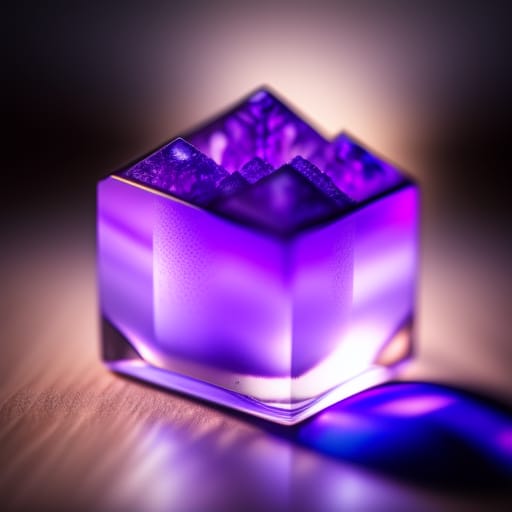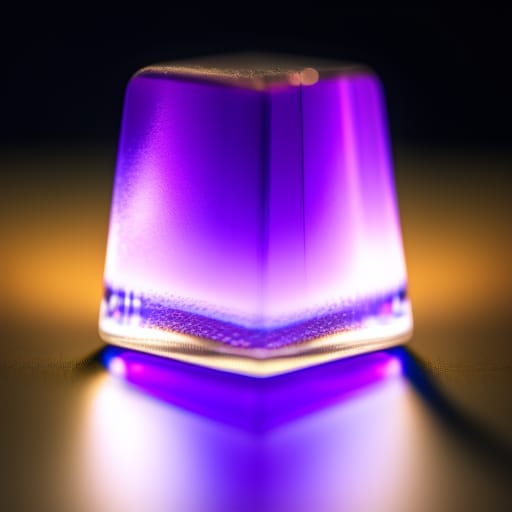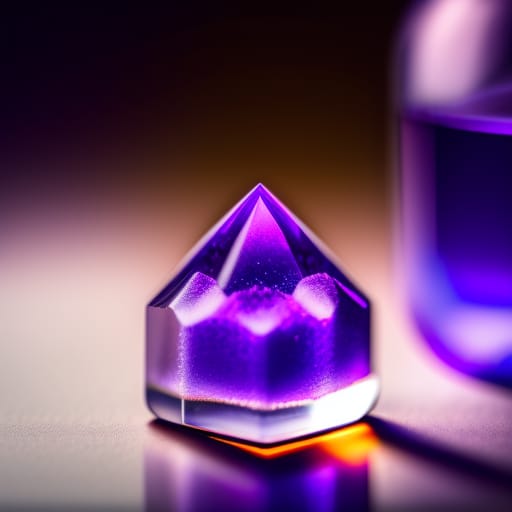Growing beautiful, flawless crystals is an art that requires care, patience, and the right techniques. Whether you want to make crystals for scientific experiments, craft projects, or just for fun, following some basic guidelines will help ensure success. In this beginner’s guide, we’ll walk through the key factors for growing gorgeous crystals at home.

An Introduction to Crystal Growth
Before diving into practical crystal growing tips, let’s quickly cover some key concepts.
What is a crystal? A crystal is a solid material whose atoms, molecules or ions are arranged in an orderly, repeating 3D pattern. This internal arrangement is known as the crystal structure. Common crystals include quartz, diamond, and salt.
How do crystals form? Crystals begin forming when solute molecules start coming out of solution and bonding together in an organized way, a process called crystal nucleation. Once nucleated, the crystalline structure continues growing outward as more molecules add on, resulting in a complete, faceted crystal.
What affects crystal growth? The final size, shape, and quality of crystals depend on factors like:
- Solute concentration
- Solvent purity
- Temperature
- Pressure
- Presence of impurities
- Energy barriers inhibiting growth
With a basic understanding of crystals under our belt, let’s move on to practical tips for growing amazing specimens at home.
Choose the Right Crystal Growing Technique
The first step is selecting a crystal growing method appropriate for the substance you want to crystallize. Here are some of the most common techniques:
- Slow evaporation: Dissolve material in a solvent, and allow the solvent to slowly evaporate. Simple and easy.
- Temperature reduction: Dissolve material in hot solvent, and allow to cool slowly.
- Vapor diffusion: The solvent evaporates into an enclosed chamber, causing crystals to form.
- Gel diffusion: Material diffuses through a porous gel over time, forming crystals.
- Slow reaction: Crystals grow as two solutions react together.
For beginners, the evaporation and temperature reduction methods are the simplest to start with. Make sure to research the solubility of the substance you plan to crystallize to determine the best solvent and conditions.
Select Quality Seed Crystals
Using tiny seed crystals is one of the best ways to produce large, beautifully formed crystals. The seeds provide a template for the crystalline structure to extend off of.
- Ideal seeds are tiny single crystals, about 1 mm or less.
- Match the seed material to the substance you want to crystallize.
- Choose seeds that are flawless, with no cracks or defects.
- Handle seeds carefully to avoid damaging the crystalline structure.
- Attach seeds to glass rods or suspend them in solution on floss.
Seeding the solution helps align the crystal orientation and habit for optimal growth.
Maintain Proper Temperature Control
Temperature greatly impacts solubility and crystal growth rates. Here are some tips for temperature control:
- Identify the ideal growth temp for the substance, usually 15-30°C below the saturation point.
- Invest in a precise adjustable hot plate or water bath for crystal growth.
- Insulate containers to minimize temperature fluctuations.
- Allow temperature to decrease slowly, no more than 1°C per day.
- Avoid sudden temperature changes which can fracture crystals.
Keeping the solution within the optimal temperature range helps crystals grow slowly and evenly for the best results.
Use High Purity Solvents
Impurities in the solvent can get incorporated into the crystalline structure leading to defects, irregular growth, and poor-quality crystals.
- Whenever possible, use reagent grade or higher solvents.
- Filter solvents through 0.2-micron filters to remove particulates.
- Consider distilling solvents to further purify them.
- Match solvent polarity to the solubility of the material being crystallized.
Taking steps to maximize solvent purity removes contaminants that can interfere with orderly crystalline growth.
Prevent Vibrations and Agitation
Crystal growth easily gets disrupted by vibrations or movement. Here are some tips for a stable, vibration-free setup:
- Place crystallization vessels on sturdy tables or shelves, not on the floor.
- Avoid door slamming, footsteps, or other sources of vibration.
- Design a temperature-controlled box or chamber to isolate the crystals.
- Don’t handle or move crystallization vessels once growth is occurring.
- Avoid stirring or agitating solutions that damage crystalline structures.
The more stable and motionless the crystals can remain as they grow, the higher quality results they will produce.

Carefully Monitor Crystallization Progress
Keep a close eye on your crystallization setup over time. Here’s what to look out for:
- Check for initial crystal nucleation within the first 1-2 days.
- Inspect for any unwanted crystallization in improper locations.
- Look for secondary crystals forming which depletes material from the primary crystal.
- Observe growth habit – are crystalline faces developing evenly?
- Monitor for cloudiness or precipitation indicating uncontrolled growth.
Catching issues early allows for adjustments like removing secondary crystals, replenishing feedstock solution, or modifying conditions to get growth back on track.
Employ Crystal Growth Inhibitors
Growth inhibitors are chemicals that selectively retard crystal growth in specific directions. Common inhibitors include:
- Adsorbing dyes like methylene blue
- Proteins
- Alcohols
- Amino acids
- Citric acid
- EDTA
By adsorbing to certain crystal faces, inhibitors can modify habit to favor growth only in desired directions resulting in more symmetrical, faceted crystals.
Optimize Solution Stirring
For larger crystallization setups, strategic stirring or agitation can improve results:
- Use a rotating mixer or stir bar to generate smooth laminar flow.
- Adjust rpm to avoid forming a vortex or turbulence.
- Consider reversing direction periodically.
- Shut off mixing once crystals are several mm large to avoid damage.
Controlled stirring maintains homogeneity, prevents sedimentation, and aids the transport of nutrients to growing crystals.
Practice Proper Crystal Recovery Techniques
Improper handling during crystal recovery can cause unnecessary damage. Use these tips:
- Harvest crystals once growth is complete, indicated by no further size increase.
- Carefully remove the solvent by pipette before handling crystals.
- Transport crystals suspended in mother liquor using vials or dishes.
- Allow crystals to air dry fully on filter paper changing orientation periodically.
- Store crystals in protective vials padded with cotton in a cool, dry place.
With good technique, you can safely recover the fruits of your crystal growing labor without harm.
Troubleshooting Common Crystal Growing Problems
Even with ideal conditions, sometimes crystal growing attempts can go awry. Here are some common issues and how to address them:
Problem: No crystals form at all
Solution: Verify supersaturation was reached. Increase concentration, reduce temperature, or slow evaporation rate. Use seed crystals.
Problem: Crystals are small or poorly formed
Solution: Filter solvents to remove impurities. Increase solute concentration. Modify temperature profile. Shield crystals from vibration or agitation.
Problem: Many tiny crystals instead of large single crystals
Solution: Slow the nucleation phase then reduce supersaturation to favor growth over nucleation. Identify and eliminate crystalline nuclei.
Problem: Clusters of crystals or crystallization in the wrong areas
Solution: Filter out nucleation sites. Cover areas outside of the desired well with oil to prevent undesired crystallization. Use a crystallization chamber for a controlled environment.
Problem: Cloudy solution, grainy deposits or precipitates
Solution: Filter and purify solvent, adjust temperature profile, modify evaporation rate to avoid rapid crystallization.
By learning from each attempt, you can iteratively improve your crystal growing skill.
Applications of Crystal Growing
Beyond being beautiful specimens, crystals have many uses:
- Scientific research – Protein crystals for X-ray crystallography, semiconductor or superconductor crystals.
- Medicine – Crystallization of proteins, DNA, and viruses to enable the study of their molecular structure.
- Industry – Mass production of crystalline materials for electronics, optics, laser, sensor and detector applications.
- Chemistry – Growing crystals of reagents for purification, and chemical analysis.
- Jewelry – Faceted gemstones, semiprecious stones.
- Education – Classroom demonstrations and experiments.
There are countless ways flawless laboratory-grown crystals can contribute to our technology, knowledge, and quality of life.

Get Started Growing Your Own Crystals
Armed with this beginner’s guide, you now have a solid foundation in the key factors that lead to successful crystal growth. Here are some great next steps:
- Pick an easy substance like alum, salt, or sugar to start your first crystals.
- Choose proven methods like evaporation or temperature reduction.
- Invest in quality labware – clear glass jars or beakers, hot plates, thermometers, and filtration equipment.
- Meticulously follow instructions and precisely control conditions.
- Keep detailed notes on each attempt so you can improve your techniques.
- Join online crystal growing communities to get feedback and inspiration.
- Read advanced books and articles to take your skills to the next level.
With passion and patience, you’ll be growing gorgeous, flawless crystals in no time. We can’t wait to see the fruits of your crystalline labor!
Conclusion: The Future is Crystalline
In nature, stunningly perfect crystals can take thousands or millions of years to grow in caves and geodes. But with the techniques outlined here, you can create similar marvels in your home in weeks or months. Mastering the art of flawless crystal growth requires care, diligence, and practice. But the payoff is owning a naturally grown masterpiece that is uniquely yours.
Crystals have come to represent purity, harmony, perfection, and balance. By learning to optimize the growth environment and conditions, you allow the innate structure and geometry of crystalline substances to self-assemble into sublime works of natural geometric art.
Beyond aesthetics, laboratory-grown crystals are enabling advances in science, technology, and medicine to improve our lives. We hope this guide has sparked your interest to join thousands of crystal growers in pursuing and mastering this rewarding hobby. With the foundation covered here, you are now ready to embark on your own journey of discovery into the dazzling world of crystals. We can’t wait to see the precious structures you create!
Frequently Asked Questions
What are the most important factors for crystal growth?
The most critical factors for successful crystal growth are proper solvent and temperature selection, using high-purity solvents, controlled slow cooling, optimal supersaturation, avoiding vibrations and agitation, and employing seed crystals and growth inhibitors if needed. Paying close attention to these parameters helps ensure a flawless crystalline structure.
How can I make a perfect single crystal?
Getting a perfect single crystal requires initiating growth on a tiny high-quality seed crystal no larger than 1 mm. Maintain very stable conditions and slow growth rates to extend the crystalline structure outward gradually without flaws. Prevent secondary nucleation and block growth in undesired directions with inhibitors so all material goes to expanding the main crystal.
What causes cloudiness and precipitation during crystal growth?
Cloudy solvent and precipitate indicate uncontrolled spontaneous nucleation is occurring in the solution. This depletes material and prevents orderly crystalline growth. Troubleshoot by filtering the solvent, modifying the temperature profile, adjusting the evaporation rate, and improving procedural techniques to avoid rapid uncontrolled crystallization.
How long does it take to grow crystals?
Crystal growth is a slow process that depends on the substance, methods, and conditions. Typical timeframes range from days to weeks for small crystals, and weeks to months to grow very large flawless single crystals. Patience is required. Optimize temperature and concentration to speed growth, but not so fast that defects occur.
What are some common beginner mistakes in crystal growing?
Common new crystal grower mistakes include: using impure solvents, uncontrolled evaporation or cooling rates, vibrations, choosing poor quality seed crystals, allowing multiple nucleation sites, incorrectly recovering crystals, and inadequate environmental controls. Read guides, follow protocols precisely, and learn from each attempt.